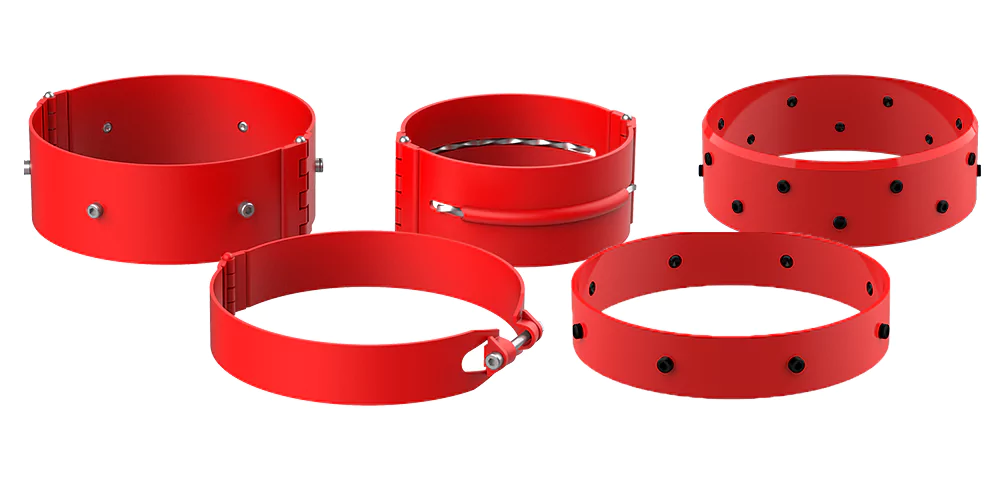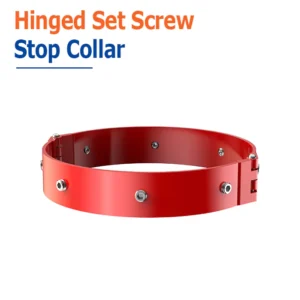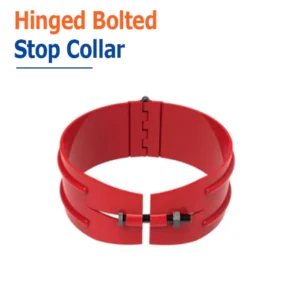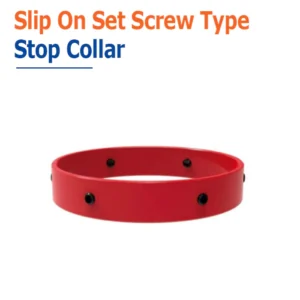hot selling stop collar
what is a stop collar
A stop collar is a mechanical device used in the oil and gas industry to secure downhole tools, like centralizers and cement baskets, onto a casing string. They prevent these tools from moving axially (up or down) during the casing run and cementing process, which is critical for ensuring proper cement placement and zonal isolation. The main types are categorized by their installation method: slip-on and hinged.
In well construction, a casing string—a series of steel pipes—is lowered into a drilled wellbore. To ensure the casing is centered in the hole and that cement can flow uniformly around it, tools like centralizers are attached at specific intervals. The stop collar’s primary job is to lock these tools in their designed position, preventing them from slipping or moving due to friction against the wellbore walls or the weight of the casing.

Without a properly installed stop collar, a centralizer could slide out of place, leading to several problems:
Poor Cementing: If the casing isn’t centered, the cement won’t be distributed evenly, which can create voids or channels.
Reduced Zonal Isolation: Uneven cement can lead to poor isolation of different geological zones, potentially allowing fluids to migrate between them.
Casing Damage: An unsecured centralizer can cause damage to the casing or get stuck in the wellbore.
Stop Collar Types and Functions
Stop collars are classified into two main categories, each with its own variations based on the locking mechanism.
1. Slip-On Stop Collar
Slip-on stop collars are one-piece rings that must be slid over the end of the casing joint before the centralizer or other tool is installed. They are the most common type and are known for their high holding force. Their seamless design makes them suitable for applications where the casing string will be rotated during placement.

Slip-On with Set Screws (Single Row, Double-Row/Heave Duty)
This is the most prevalent type. The collar has one or more rows of threaded holes. Once the collar is positioned on the casing, set screws are tightened, which bite into the casing's surface to create a strong friction grip. This type is used when a very high holding force is required, especially in demanding well conditions.

Slip-On with Slips (Automatic)
This type uses internal "slips" or tapered wedges that automatically grip the casing when a downward force is applied. This design provides a superior holding force with minimal damage to the casing and is often used in applications with high axial loads.

Beveled
These collars have beveled edges to provide a smooth lead-in for the centralizer, protecting the centralizer's bows or vanes from damage during installation.
2. Hinged Stop Collar
Also known as latch-on stop collars, these are two-piece devices that are hinged together. This design allows them to be latched onto the casing at any point, which is a major advantage when other tools are already on the pipe, eliminating the need to slide them from the end.

Hinged Bolted Stop Collar
This type uses a nut and bolt assembly to secure the two halves of the collar around the casing. Tightening the bolt pulls the halves together, creating a tight friction grip. It is a robust option that can be installed quickly without damaging the casing

Hinged with Set Screws
This design combines the convenience of a hinged collar with the high holding force of set screws. The collar is latched on, and then set screws are tightened to provide an extra-firm grip on the casing. This is a versatile option for various applications.

Hinged Spiral Nail
This type features an internal groove into which a spiral nail is driven. The nail acts as a locking pin, firmly wedging the collar onto the casing. This design is valued for its quick, "one-go" installation and low-profile, which is ideal for wells with tight annular clearances.
Summary of Key Differences
| Feature | Slip-On Stop Collar | Hinged Stop Collar |
|---|---|---|
| Pieces | One-piece | Two-piece (hinged) |
| Installation | Must be slid onto the end of the casing. | Can be latched on at any point on the casing. |
| Holding Force | Generally provides the highest holding force. | Strong, but may vary by locking mechanism. |
| Typical Use | For high-load applications and when installing on a bare casing joint. | For applications requiring quick and easy installation, or when other tools are already on the pipe. |






